One of the most fundamental questions ag professionals asks is: what is the most cost-effective way to optimize the land we're farming? The agricultural industry has gained ground in recent years with precision farming and nutrient management. One important aspect of this is the application of variable rate fertilizer (VRF), which allows growers to target specific areas of their fields with the right amount of nutrients.
Fertilizer is an essential component of agriculture and plays a crucial role in the growth and development of crops. However, conventional fertilizer application methods can often result in over- or under-fertilization, leading to reduced crop yields and soil health. This is where variable rate fertilizer application comes in as a solution.
Variable rate fertilizer application is a precision agriculture technique that adjusts the amount of fertilizer applied to different areas of a field based on its specific nutrient needs. This method uses mapping technology, soil samples, and crop data to determine the precise amount of fertilizer needed for optimal growth in each area of the field.
The benefits of variable rate fertilizer application are many. Growers can reduce the risk of over- or under-fertilization, increase crop yields, and improve soil health by applying the right amount of fertilizer. In addition, variable rate fertilizer application can also save growers time and money by reducing the amount of fertilizer that is needed and preventing waste.
While variable rate has many touted benefits, many growers are still slow to adopt variable rate fertilizer technology for a good reason. It may be costly to get the equipment and challenging to implement. Many growers are looking for concrete examples of a return on investment. According to an article in Grainews, "less than 15 percent of Prairie growers are utilizing VRF technology on some or all of their wheat and canola fields." They may also be looking at the wrong opportunity.
This SWAT MAPS article presents a range of uses for a SWAT MAP on a single crop, emphasizing the substantial value it can bring in just one season. In this Farmers Edge piece, the efficiencies that can be achieved through the implementation of variable rate technology for herbicide and fungicide application are explored. The overwhelming evidence in this article supports the conclusion that precision agriculture can positively impact the environment in various areas.
At Lucent Bio, we believe that variable rate fertilizer application is important for the future of Agriculture. Often, variable rate is focused on inputs like seed or macronutrients. We don't often see examples of how this can work for micronutrients. Our team of experts is dedicated to helping growers understand the benefits of this technology and how it can improve their operations. Our cutting-edge micronutrient fertilizer, Soileos, supports variable rate fertilizer application and ensures consistent bioavailability of essential micronutrients, maximizing crop performance and soil health. (See how it works here)
Let’s take a closer look at a successful Soileos trial of variable rate zinc application in wheat in the Canadian Prairies. (You can find more trial data on our website!)
Case Study
Zinc deficiencies are a widespread issue in the Prairies, with up to 66% of soil samples in Saskatchewan being deficient in this essential nutrient. Despite this, wheat is not typically known for being highly responsive to zinc. However, a trial conducted by Lucent Bio showed the right source, rate, place, and time of zinc application can significantly affect yields.
Figure 1: Major soil zones of the Canadian prairie provinces 1
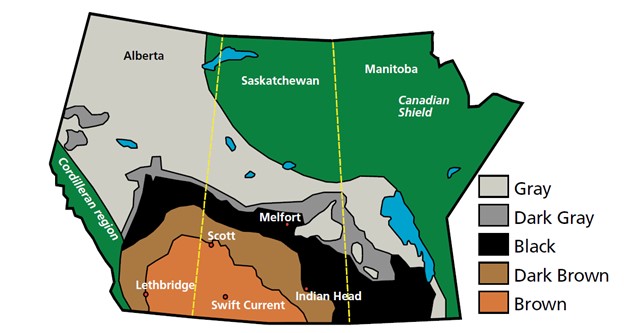
Zinc deficiencies tend to show up more in the brown and dark brown soil zones, whereas copper deficiencies are more prevalent in the black and dark grey zones. Check out the spatial relationship between soil zones in Figure 1 and Zinc deficiency prevalence in Figure 2 (there is quite a bit of overlap!).
Figure 2: Zinc Deficiency in the Canadian prairie provinces 2
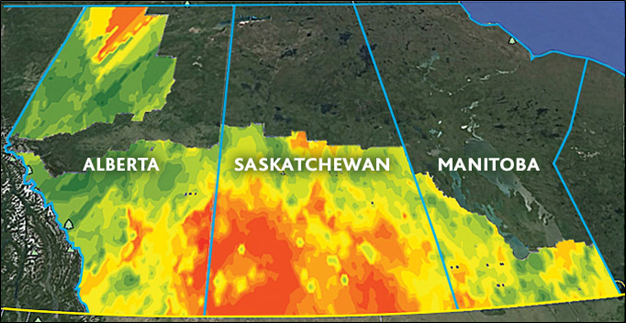
So what can zinc levels look like at the field level? The map below was generated using Croptimistic SWAT Maps paired with zone sampling and soil sample analysis (Figure 3).
Figure 3: Spatial variation of soil since levels within a field
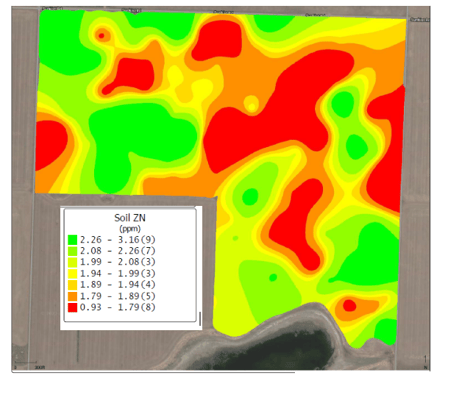
Through a strip trial protocol, the team applied Soileos Zinc at a flat rate of 10 lbs/ac across all soil zones (Figure 4). The results showed a 1.4 bu/ac advantage in yields, leading to an extra $4/ac profit after covering the cost of the product while also building soil zinc levels for the following years. However, further analysis of the trial field revealed an even greater potential for yield increases (Figure 5). By cutting out the pass on the south half of the field and focusing on the low zinc area, the yield response increased to 4.3 bu/ac - an extra $33/ac profit after accounting for the additional cost of sampling and mapping.
Figure 4: As applied (Soileos Zinc) overlayed with Soil Zinc Levels
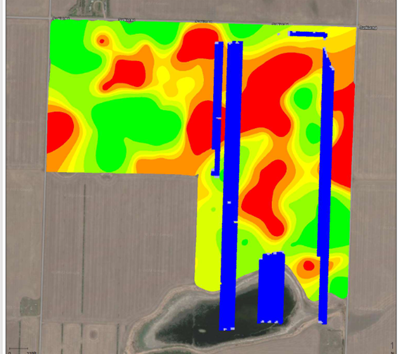
Figure 5: Yield analysis - low soil zinc treated vs low soil zinc untreated.
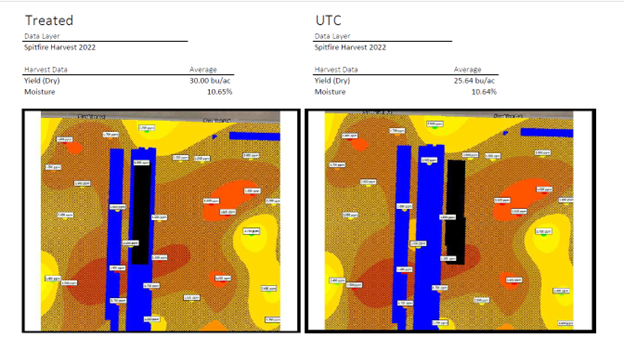
This case study highlights the importance of precision nutrient management and the benefits of variable rate fertilizer application. By mapping their fields and analyzing soil samples, growers can make informed decisions about where and how to apply their fertilizers for maximum yield and profit.
In conclusion, variable rate fertilizer application is a crucial component of sustainable agriculture. By precisely applying the right amount of fertilizer, growers can increase crop yields, improve soil health, and reduce waste. So, if you're a grower looking to improve your operations, consider adopting variable rate fertilizer technology and partnering with Soileos to achieve the ultimate return.
Contact us today to learn more about our sample and VRT rebates and to start your journey toward precision agriculture.
Links
5 Ways to Use SWAT MAPS in a Single Season
Environmental benefits of precision agriculture
Variable Rate Technology: More than Just Fertility and Planting Prescriptions
1 - Willms W., B. Adams, and R. McKenzie. 2011. Overview: Anthropogenic Changes of Canadian Grasslands. In Arthropods of Canadian Grasslands (Volume 2): Inhabitants of a Changing Landscape.
Edited by K. D. Floate. Biological Survey of Canada. pp. 1-22.
2 - Maximizing yield with micronutrients. All. (n.d.). Retrieved from https://www.agro.crs/grow/detail/maximizing-yield-with-micronutrients